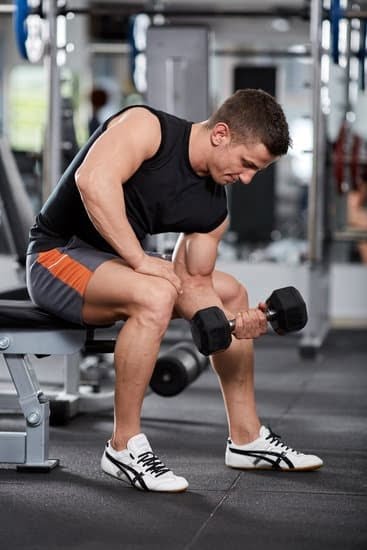Regular exercise and fitness play a crucial role in maintaining overall health and well-being. Exercise is not just about losing weight or gaining muscle, but it also contributes to improved cardiovascular health, increased strength, and enhanced mental well-being. Incorporating different types of exercises into your routine can help you achieve your fitness goals while enjoying a variety of benefits.
Engaging in regular physical activity can significantly reduce the risk of chronic diseases such as heart disease, diabetes, and obesity. Different types of exercises, including cardio, strength training, flexibility exercises, and even mind-body activities like yoga or Pilates, offer unique benefits for the body and mind. By diversifying your workout routine, you can target different muscle groups, improve endurance, flexibility, and coordination.
Setting realistic fitness goals is essential to stay motivated and committed to your exercise regimen. Whether your goal is to lose weight, build muscle mass, or improve overall fitness levels, creating a well-structured workout plan can help you track progress and stay on track. Additionally, focusing on proper nutrition alongside regular exercise is key to achieving optimal results and maintaining a healthy lifestyle.
By overcoming common fitness challenges and staying consistent with your workouts, you can experience the mental health benefits that physical activity provides. Tracking progress can also help you stay motivated and engaged in your fitness journey while incorporating various workout styles for variety and continued success as a beginner or seasoned exerciser alike.
Different Types of Exercise and Their Benefits
Exercise and fitness go hand in hand when it comes to maintaining a healthy lifestyle. There are various types of exercises that offer unique benefits for the body, helping individuals achieve their fitness goals. Here are some different types of exercises and their corresponding benefits:
- Cardiovascular Exercise: Cardio workouts, such as running, swimming, or cycling, help improve heart health, increase endurance, and burn calories effectively.
- Strength Training: Strength training exercises, like weight lifting or bodyweight workouts, are essential for building muscle mass, increasing metabolism, and improving overall strength.
- Flexibility and Balance Training: Incorporating activities like yoga or Pilates can enhance flexibility, improve posture, prevent injuries, and promote better balance in everyday movements.
Each type of exercise plays a crucial role in enhancing different aspects of physical fitness. It is essential to incorporate a variety of exercises into your workout routine to ensure comprehensive support for your overall health and well-being.
Whether you are a beginner or an experienced fitness enthusiast, finding the right mix of exercises that work best for your body can significantly impact your progress. By incorporating a combination of cardiovascular, strength training, and flexibility exercises into your routine, you can maximize the benefits of exercise and achieve optimal results in terms of improved fitness levels and overall well-being.
Remember to consult with a fitness professional to tailor a workout plan that suits your individual needs and goals.
Setting Realistic Fitness Goals
Understanding the Importance of Setting Realistic Goals
Setting realistic fitness goals is essential for success in any exercise and fitness journey. Unrealistic goals can lead to frustration, burnout, and even injury. By setting achievable and measurable goals, individuals are more likely to stay motivated, see progress, and maintain their exercise routine long-term. It’s crucial to be honest with oneself about current fitness levels, time commitments, and limitations when establishing these goals.
Creating Specific and Measurable Objectives
When setting realistic fitness goals, it’s important to be specific and measurable. Instead of saying “I want to lose weight,” a more effective goal would be “I want to lose 10 pounds in the next three months.” This gives a clear target to work towards and allows for tracking progress along the way. Breaking down larger goals into smaller milestones can also help keep individuals on track and provide a sense of accomplishment as each milestone is reached.
Seeking Professional Guidance and Support
For those new to exercise and fitness or facing specific challenges, seeking guidance from a fitness professional can be incredibly beneficial. A personal trainer or fitness coach can help individuals set realistic goals based on their current fitness level, lifestyle, and preferences. They can also provide support, accountability, and personalized workout routines to help achieve these goals effectively. Remember that everyone’s fitness journey is unique, so what works for one person may not work for another.
Creating a Well-Rounded Workout Routine
When it comes to creating a well-rounded workout routine, incorporating a variety of exercises is key to achieving overall fitness. A balanced workout routine should include a mix of cardiovascular, strength training, flexibility, and balance exercises to target different muscle groups and improve overall physical health. Here are some types of exercises you can incorporate into your routine:
- Cardiovascular exercises: Running, cycling, swimming, or dancing are great choices for improving heart health and increasing endurance.
- Strength training: Weightlifting, bodyweight exercises, or resistance band workouts help build muscle strength and increase metabolism.
- Flexibility exercises: Stretching or yoga can improve flexibility, reduce the risk of injury, and help maintain joint mobility.
- Balance exercises: Tai Chi or stability ball workouts can improve balance and coordination, which is important for preventing falls and injuries.
Setting aside time for each type of exercise throughout the week will ensure that you are working all aspects of your fitness. Remember that consistency is key when it comes to seeing results in your exercise and fitness journey. By diversifying your workouts and challenging yourself with new exercises, you can continue to progress towards your fitness goals.
Finding activities that you enjoy and that align with your fitness goals is also important in creating a sustainable workout routine. Whether it’s group classes at the gym, outdoor activities like hiking or biking, or simply going for a daily walk – finding activities that you look forward to will make it easier to stick to your routine. Remember that every little bit counts when it comes to staying active and maintaining a healthy lifestyle.
The Role of Nutrition in Fitness
When it comes to achieving optimal fitness levels, exercise alone may not be enough. The role of nutrition in fitness is crucial for supporting your body’s needs and maximizing the benefits of your workout routine. Proper nutrition provides the fuel and nutrients necessary to help you perform at your best during exercise, as well as aiding in recovery and muscle building afterwards.
A balanced diet that includes a variety of macronutrients (carbohydrates, proteins, and fats) and micronutrients (vitamins and minerals) is essential for overall health and fitness. Carbohydrates are important for providing energy during workouts, while protein is crucial for muscle repair and growth.
Healthy fats play a role in supporting hormone production and nutrient absorption. Consuming a mix of these nutrients through whole foods such as fruits, vegetables, lean proteins, whole grains, and healthy fats can help optimize your performance in exercise and fitness goals.
In addition to macronutrients and micronutrients, hydration is another key component of nutrition in fitness. Staying properly hydrated before, during, and after exercise is important for regulating body temperature, lubricating joints, transporting nutrients throughout the body, and flushing out toxins.
Dehydration can negatively impact exercise performance and recovery, so it’s important to drink an adequate amount of water throughout the day to support your exercise routine. By paying attention to your nutritional intake alongside your exercise regimen, you can enhance your overall fitness results and improve your wellbeing both physically and mentally.
Overcoming Common Fitness Challenges
Overcoming Time Constraints
One common fitness challenge that many people face is finding the time to exercise regularly. With busy work schedules, family commitments, and other responsibilities, it can be difficult to carve out time for a workout. One way to overcome this challenge is to schedule your workouts like any other appointment or meeting.
Set aside specific times during the week dedicated to exercise, and treat it as non-negotiable time for yourself. This can help prioritize fitness in your schedule and make it more likely that you’ll stick to your routine.
Dealing With Plateaus
Another challenge that individuals may encounter on their fitness journey is hitting a plateau. This can happen when your body adapts to your regular workout routine, leading to stagnant progress. To overcome plateaus, consider mixing up your workouts by trying new exercises or incorporating different types of training such as high-intensity interval training (HIIT) or strength training. Adding variety to your routine can shock your body into responding and help you break through plateaus.
Staying Motivated
Maintaining motivation for exercise and fitness can be a struggle at times, especially when results are not immediately visible or progress seems slow. One way to stay motivated is by setting short-term goals that are achievable and measurable. Celebrate small victories along the way, whether it’s hitting a new personal record in weightlifting or running an extra mile without stopping.
Additionally, finding a workout buddy or joining group classes can provide accountability and camaraderie, making exercise more enjoyable and motivating. Remember that consistency is key in achieving long-term fitness goals, so find ways to keep yourself engaged and excited about your workouts.
The Mental Health Benefits of Exercise
Engaging in regular exercise not only contributes to physical well-being but also plays a crucial role in enhancing mental health. Physical activity has been shown to have a positive impact on reducing symptoms of anxiety, depression, and stress.
When you exercise, your body releases endorphins, which are known as “feel-good” hormones that can boost your mood and overall sense of well-being. Additionally, regular exercise can improve sleep quality, increase self-esteem, and provide a sense of accomplishment – all factors that contribute to better mental health.
Moreover, participating in physical activity can serve as a form of stress relief and a way to disconnect from the pressures of everyday life. Whether it’s going for a run, practicing yoga, or lifting weights at the gym, exercise provides an outlet for releasing pent-up energy and tension.
The focus required during physical activity can act as a form of meditation, helping individuals to clear their minds and alleviate feelings of worry or anxiety. Overall, incorporating exercise into your routine can lead to improved cognitive function and emotional well-being.
Research has also shown that consistent exercise can help reduce the risk of developing mental health conditions such as depression and anxiety disorders. By making physical activity a priority in your life, you are not only investing in your physical health but also in your mental wellness. Finding activities that you enjoy and making them part of your regular routine is key to reaping the mental health benefits that exercise has to offer.
| Mental Health Benefits | Exercise Effects |
|---|---|
| Reduced anxiety and stress | Release of endorphins during exercise helps decrease feelings of anxiety and stress. |
| Improved mood | Regular exercise boosts mood through the release of feel-good hormones. |
| Enhanced sleep quality | Physical activity promotes better sleep patterns leading to improved mental health. |
Tracking Progress and Staying Motivated
Staying motivated and tracking progress are key elements in maintaining a consistent exercise and fitness routine. Tracking progress allows individuals to see their improvements over time, whether it be in strength, endurance, flexibility, or overall performance. This can serve as a great source of motivation to continue working hard towards fitness goals. It also provides a sense of accomplishment and boosts confidence, which can help in staying dedicated to an exercise regimen.
One effective way to track progress is by keeping a workout journal or log. This can include details such as the type of exercise, duration, sets, repetitions, and any other relevant information about each workout session.
By recording these details consistently, individuals can visually see their improvements and identify areas that may need more focus. Additionally, technology has made it easier than ever to track progress with various fitness apps and wearable devices that monitor key metrics like heart rate, calories burned, and steps taken.
Another motivational technique is setting specific milestones or goals to strive for. These goals should be realistic yet challenging enough to keep individuals engaged and excited about their fitness journey.
Celebrating small victories along the way can help boost morale and maintain momentum. Whether it’s reaching a certain weight goal, running a faster mile time, or mastering a new yoga pose, setting achievable targets can provide the drive needed to push through any obstacles that may arise in the pursuit of better health and wellness.
| Benefits of Tracking Progress | Strategies for Staying Motivated |
|---|---|
| Visual representation of improvements | Setting specific milestones |
| Identification of areas for improvement | Celebrating small victories along the way |
| Boosts confidence and morale | Using technology for tracking progress |
Beneficial Exercise Tips for Beginners
Starting a new exercise and fitness routine can be daunting, especially for beginners who are unsure of where to begin. However, taking the first steps towards a healthier lifestyle is crucial for overall well-being. One beneficial tip for beginners is to start slowly and gradually increase the intensity of your workouts. This approach allows your body to adjust to the new physical demands and reduces the risk of injury.
Another important exercise tip for beginners is to find activities that you enjoy. Whether it’s running, swimming, yoga, or weightlifting, choosing an exercise that you find enjoyable increases the likelihood that you will stick with it in the long run. Engaging in activities that bring you joy can make your fitness journey more sustainable and rewarding.
Lastly, seeking guidance from a qualified fitness professional or personal trainer can be extremely beneficial for beginners. A trainer can assess your current fitness level, help set realistic goals, and create a personalized workout plan tailored to your specific needs and abilities.
Working with a professional not only ensures that you are exercising safely and effectively but also provides accountability and support on your fitness journey. Investing in professional guidance can set beginners up for success in their pursuit of better health and fitness.
Incorporating Different Workout Styles for Variety and Results
Regular exercise and fitness play a crucial role in maintaining overall health and well-being. By incorporating different workout styles, individuals can not only keep their routines interesting but also achieve better results. It is important to vary one’s workouts to challenge the body in different ways and prevent plateaus. Whether it’s mixing up cardiovascular exercises with strength training or trying new fitness classes, diversity in workouts can lead to improved physical fitness and overall health.
Incorporating various workout styles offers a range of benefits. Cardiovascular exercises like running, swimming, or cycling help improve heart health and endurance, while strength training enhances muscle tone, strength, and bone density. Flexibility and balance exercises such as yoga or Pilates contribute to overall flexibility and reduce the risk of injury. By adopting a well-rounded workout routine that includes different styles of exercise, individuals can target various muscle groups, improve their overall fitness level, and prevent boredom.
As individuals progress in their fitness journey, it’s essential to set realistic goals and track their progress along the way. Celebrating small victories can help maintain motivation and momentum towards achieving larger fitness goals. Additionally, focusing on nutrition plays a significant role in supporting exercise efforts.
A balanced diet provides the necessary fuel for workouts and aids in recovery post-exercise. Ultimately, by incorporating different workout styles into their fitness routines, individuals can enjoy a variety of physical activities while reaping the numerous benefits that exercise and fitness have to offer.
Frequently Asked Questions
What Is the Difference Between Exercise and Fitness?
Exercise refers to physical activity performed with the intention of improving health or fitness. It is a specific movement, such as running or weightlifting, done repetitively to build strength, endurance, or flexibility. On the other hand, fitness is the overall state of being physically healthy and being able to perform daily activities without fatigue.
Why Is Fitness and Exercise Important?
Fitness and exercise are important for maintaining overall health and well-being. Regular physical activity can help prevent chronic diseases like heart disease, diabetes, and obesity. It also boosts mood and mental health by releasing endorphins and reducing stress levels. Additionally, staying active can improve strength, flexibility, and balance as we age.
What Are the 4 Types of Exercise?
The four main types of exercise are aerobic, strength training, flexibility, and balance exercises. Aerobic exercise includes activities like running, swimming, or cycling that increase the heart rate and improve cardiovascular health. Strength training involves using weights or resistance bands to build muscle mass.
Flexibility exercises focus on stretching to improve range of motion in joints. Lastly, balance exercises help prevent falls by improving stability and coordination for older adults.

Passionate about providing useful information to anyone with an interest in the field of Personal Training, I strive to pass on to our readers quality information and to answer any questions about Personal Trainers, the work they do and how to become one.





